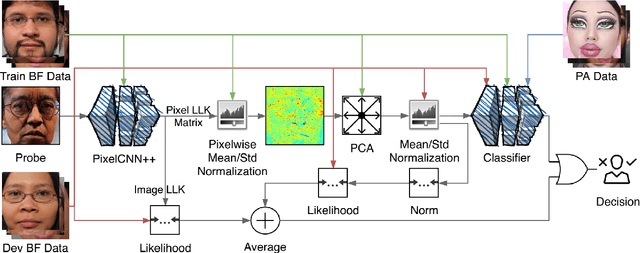Unknown Presentation Attack Detection against Rational Attackers
Paper and Code
Oct 04, 2020



Despite the impressive progress in the field of presentation attack detection and multimedia forensics over the last decade, these systems are still vulnerable to attacks in real-life settings. Some of the challenges for existing solutions are the detection of unknown attacks, the ability to perform in adversarial settings, few-shot learning, and explainability. In this study, these limitations are approached by reliance on a game-theoretic view for modeling the interactions between the attacker and the detector. Consequently, a new optimization criterion is proposed and a set of requirements are defined for improving the performance of these systems in real-life settings. Furthermore, a novel detection technique is proposed using generator-based feature sets that are not biased towards any specific attack species. To further optimize the performance on known attacks, a new loss function coined categorical margin maximization loss (C-marmax) is proposed which gradually improves the performance against the most powerful attack. The proposed approach provides a more balanced performance across known and unknown attacks and achieves state-of-the-art performance in known and unknown attack detection cases against rational attackers. Lastly, the few-shot learning potential of the proposed approach is studied as well as its ability to provide pixel-level explainability.
 Add to Chrome
Add to Chrome Add to Firefox
Add to Firefox Add to Edge
Add to Edge